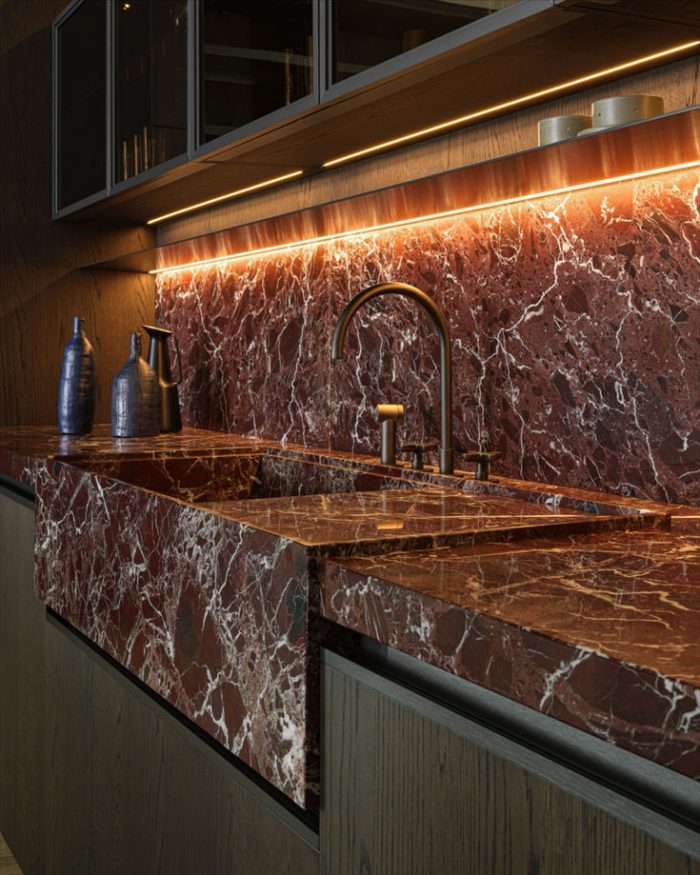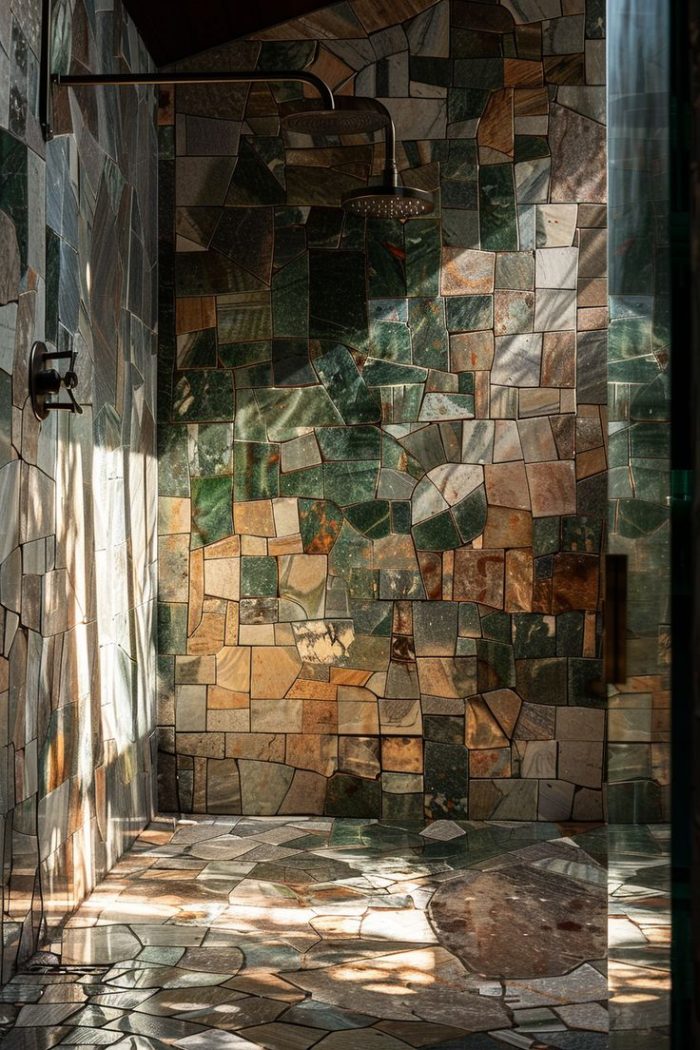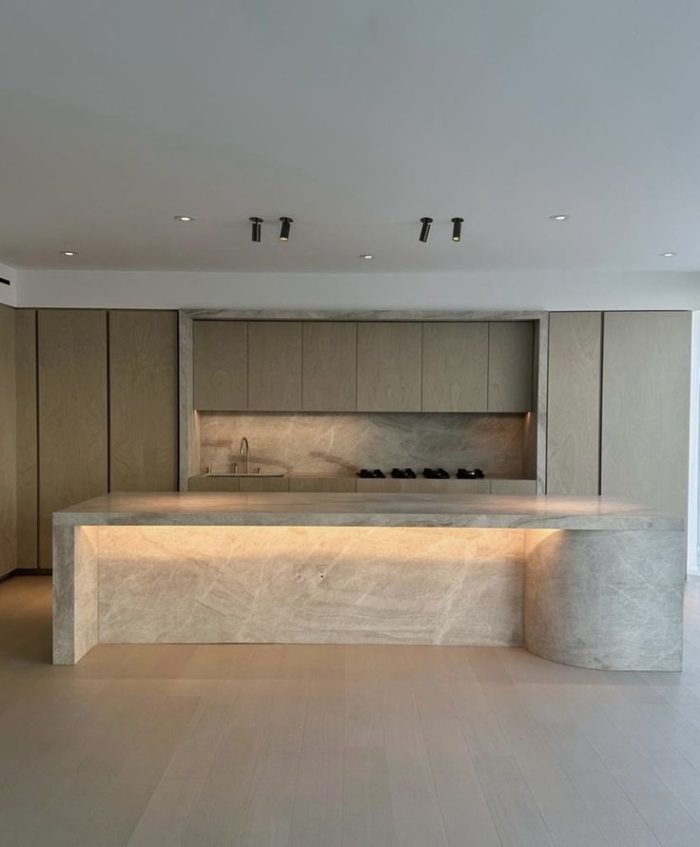
Natural stones have played an indispensable role in the historical evolution of architecture, both aesthetically and functionally. Stones such as marble, travertine, granite, and basalt do not merely serve as structural elements in interior and exterior spaces but also shape the atmosphere of a space. Each natural stone offers a unique sensory experience through its surface texture and interaction with light. The polished surface of marble, contrasted with the matte finish of travertine, determines how light falls upon and reflects from the stone’s surface. This interaction becomes a crucial tool in architectural design for creating depth and atmosphere. This essay explores the role of natural stones in architecture and their dynamic relationship with light, examining how their diverse textural properties shape spatial perception.
The interaction of natural stone with light creates significant effects that imbue a space with identity. Stones like marble, with their smooth and glossy surfaces, reflect light strongly, creating a luxurious atmosphere, while stones such as travertine, with their more natural and matte textures, soften light and create a warm environment. Harder stones like granite and basalt, with their relatively low reflective properties, leave a more weighty and enduring impression. The fine veins, patterns, and pores found on the surface of natural stones influence how light interacts with the stone, transforming the spirit of the space. Observing how light fractures, reflects and casts shadows on these surfaces fosters a deep awareness of the atmosphere within the space. This interaction not only creates a dramatic play of light and shadow but also allows the space to take on a more dynamic and layered character.
In addition to their visual depth, the textural qualities of natural stones also play an essential role in psychological impact. The smooth surfaces of marble offer a sense of refined elegance and modernity, while the porous and natural texture of travertine evokes a warm and organic ambiance. These varying textures directly affect how a space is perceived. Rougher stones create a calm and serene atmosphere, while polished stones tend to energize the space. In interior environments, the natural stones used in large lobby areas or expansive living rooms shift the relationship of light with the space throughout different times of the day. This evolving interaction between stone and light generates an aesthetic fluidity across the walls, floors, and ceilings of a room. In exterior spaces, natural stones interact with environmental factors, producing distinct light reflections and shadow play that further enhance the character of the space in harmony with nature.
In this context, the role of natural stones in architecture transcends mere aesthetic choice; it actively shapes the spirit, atmosphere, and ever-evolving dynamics of a space over time.



